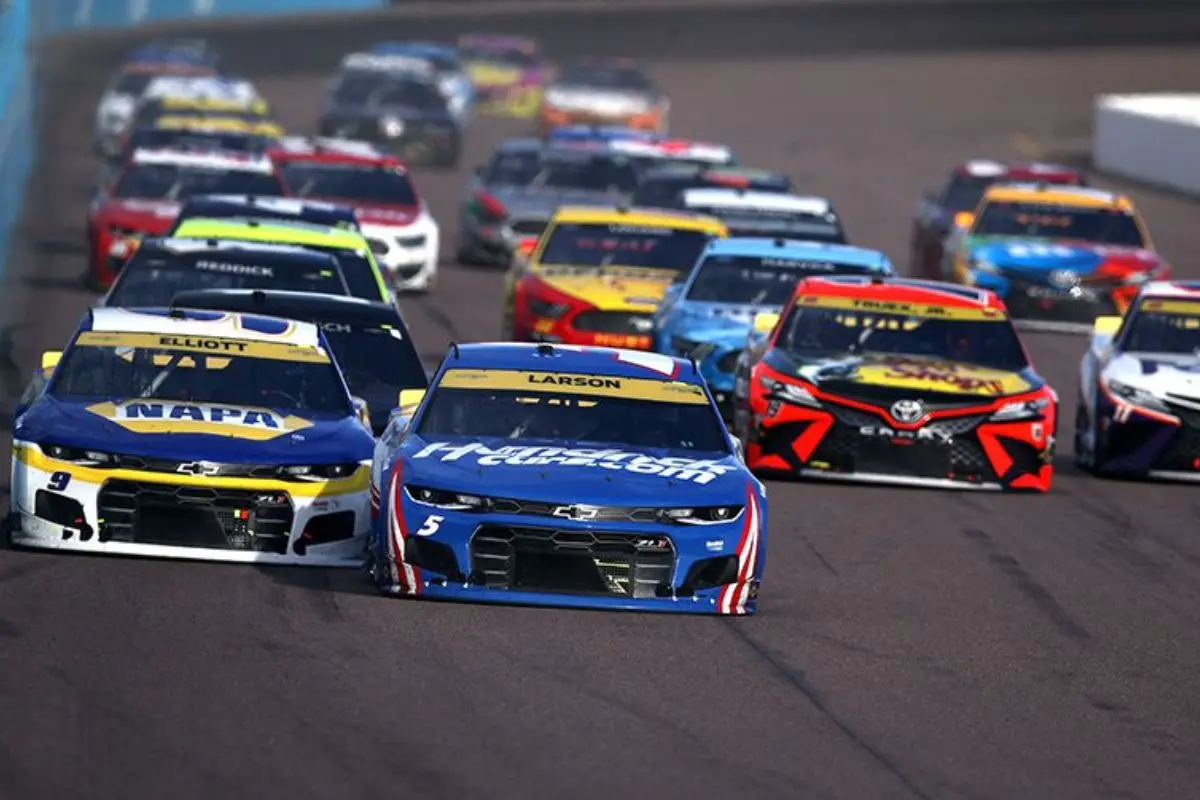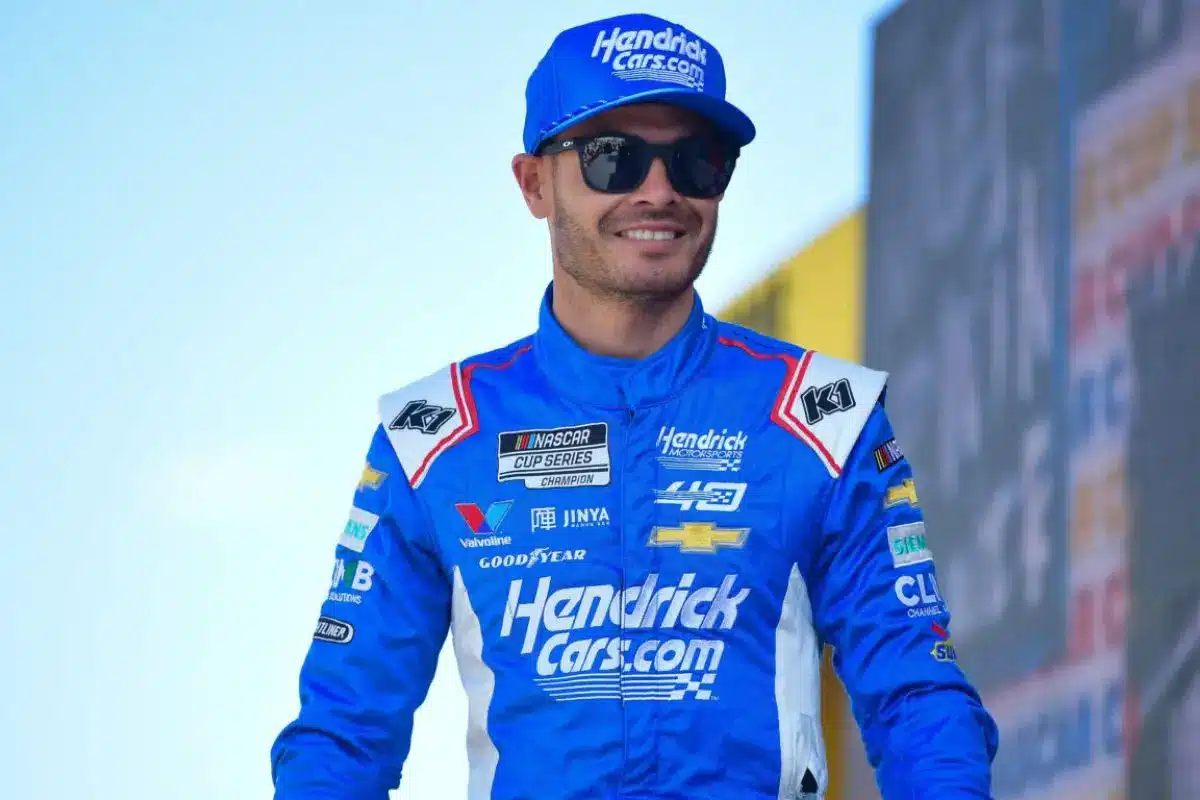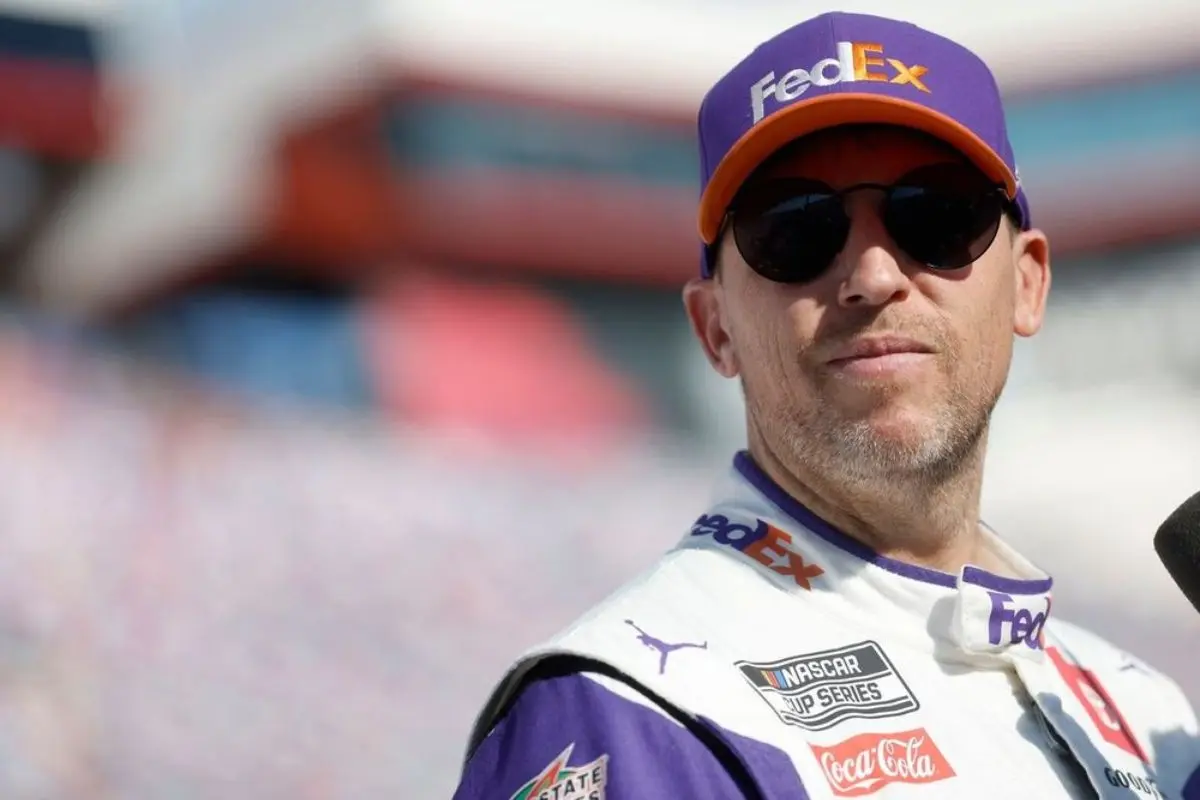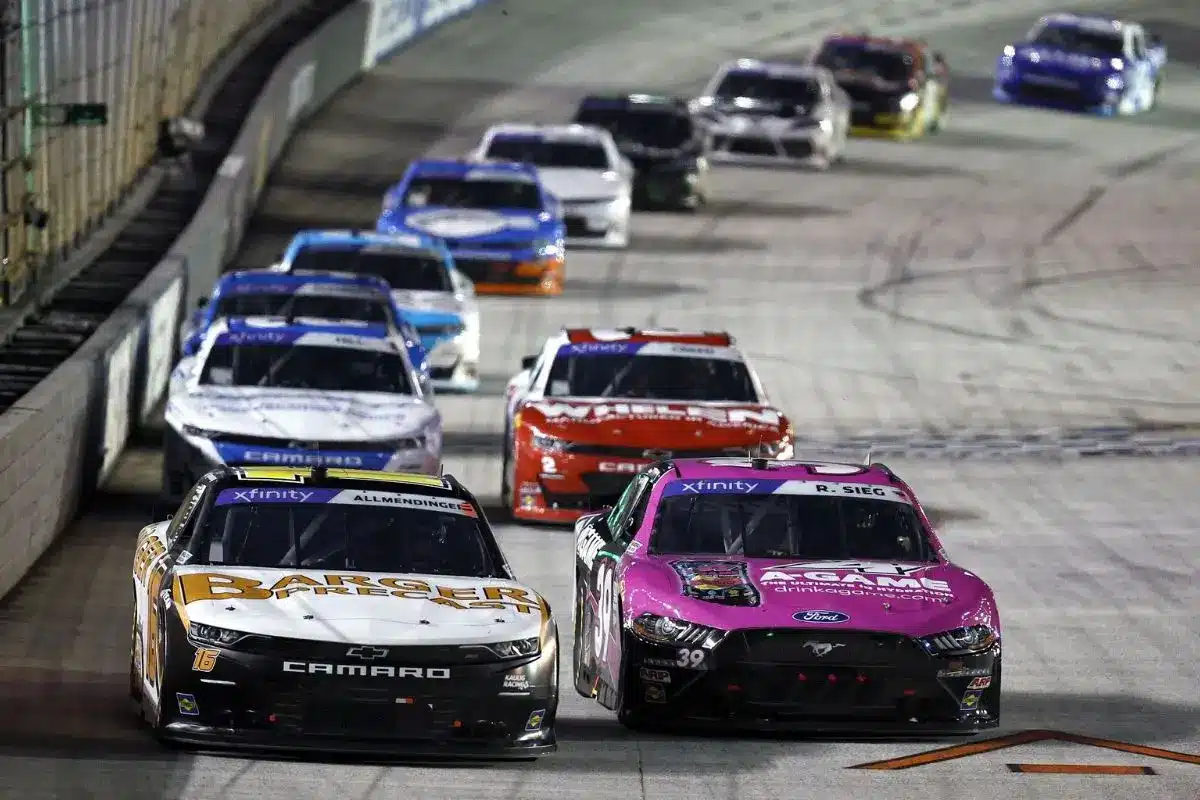NASCAR Driver Who Couldn’t Make It to the Playoffs: NASCAR’s playoff system exemplifies a paradox where talent and perseverance can swiftly become as evidenced by the heart-wrenching experiences of drivers like Brad Keselowski. Despite their dedication, a single misstep or a string of unfortunate events can result in a bitter exit from championship contention, leaving both fans and competitors questioning the fairness of such a format. This reality prompts an examination of how the structure not only shapes the seasons of those vying for glory but also influences the broader landscape of the sport.
Key Highlights
- The NASCAR playoff system eliminates drivers based on their performance, making a single poor race potentially catastrophic for championship hopes.
- Notable drivers like Martin Truex Jr. and Brad Keselowski faced early exits, highlighting the competitive nature of the sport.
- Emotional tolls are significant; drivers experience highs of victory and lows of elimination, creating a harsh environment.
- Consistent performance is crucial; even strong drivers can miss playoffs due to unexpected setbacks or poor race finishes.
- The unpredictability of racing, influenced by technical issues and race strategies, can lead to heartbreak for talented drivers.
Race Overview and Larson’s Dominance
Display of skill and strategy, Kyle Larson emerged victorious at the Bristol Night Race, leading over 400 laps and solidifying his status as a dominant force in NASCAR. This particular race, often characterized by its chaotic nature, unfolded with a surprising level of control, allowing Larson to showcase his exceptional driving ability.
His ability to maintain a commanding lead throughout the event highlighted not only his specialized skills but also his understanding of the track and race dynamics. Larson’s strategy was meticulously executed, as he adeptly navigated the nuances of Bristol’s high-banked oval.
His car’s setup, combined with acute awareness of tire management, allowed him to fend off competitors and pull away from the pack. The race was marked by Larson’s consistency, where he illustrated an impressive blend of speed and precision, creating a striking contrast to the playoff drama occurring among his rivals.
While Larson basked in the glow of his victory, the Bristol Night Race was similarly notable for the unfolding tensions within the playoff field. As four drivers faced elimination, the stakes heightened, resulting in a palpable intensity.
Eliminations from the Playoffs
Amid the backdrop of Kyle Larson’s commanding performance at the Bristol Night Race, the playoff landscape underwent a notable shift as several contenders faced elimination. The intensity of the NASCAR playoffs is palpable, and the stakes have never been higher, as evidenced by the departures of Martin Truex Jr., Brad Keselowski, Ty Gibbs, and Harrison Burton from the postseason pursuit.
REPOST if your favorite driver advanced in the #NASCARPlayoffs!
Next up: the Round of 12! pic.twitter.com/vFfVktDmWe
— NASCAR on NBC (@NASCARonNBC) September 22, 2024
Each of these drivers, having contended valiantly throughout the season, now finds themselves grappling with the harsh realities of a system that rewards consistency and performance above all else.
The elimination of such notable talents highlights the unforgiving nature of NASCAR’s playoff framework. With Larson leading a staggering 462 laps—more than any Hendrick driver in history—other drivers were left to navigate the treacherous waters of competition with the knowledge that their championship hopes were dwindling.
Truex Jr., a perennial threat, and Keselowski, a seasoned veteran, both faced the bitter pill of early exit, showcasing how even the most accomplished drivers can fall victim to the relentless pressure of the playoffs.
As the dust settles from Bristol, the reality is clear: NASCAR’s playoff system not only promotes the victors but simultaneously casts aside those who cannot adapt to its demands.
Denny Hamlin’s Performance
While the pressure of the NASCAR playoffs can often stifle drivers, Denny Hamlin exemplified a rejuvenating shift in approach during the Bristol Night Race. His performance marked a notable departure from his recent struggles, particularly when compared to his timid showing in Atlanta.
Hamlin’s ability to qualify well set a positive tone for the race, showcasing his adaptability and tactical mindset under pressure. Throughout the night, Hamlin executed a clean race, deftly avoiding the pitfalls that have plagued many playoff contenders.
By steering clear of trouble, he revealed an awareness of the high stakes involved—both regarding championship aspirations and the potential for disastrous consequences. This calculated approach allowed him to capitalize on opportunities as they arose while maintaining a competitive edge against his rivals.
Finishing in the top five not only solidified his position in the playoffs but also highlighted a critical aspect of Hamlin’s racing philosophy: the importance of consistency over reckless aggression. This performance serves as proof of his experience and resilience, revealing a driver who is not only aware of the nuances of racecraft but also adept at executing under pressure.
Ty Gibbs and Daniel Suárez
Ty Gibbs faced a challenging race at Bristol, where he needed to step up his performance to maintain a competitive edge in the playoffs. Despite the urgency of the situation, Gibbs struggled to find his rhythm and ultimately finished in 15th place. Compounding his challenges, Chase Briscoe delivered a strong performance, finishing 8th and accumulating essential stage points. This disparity left Gibbs grappling with the harsh reality of the playoff system’s unforgiving nature.
In striking contrast, Daniel Suárez had a rollercoaster night. While finishing 31st might typically spell disaster, Suárez’s earlier performances in this round were enough to propel him into the next phase of the playoffs. His close call serves as a poignant reminder of the precariousness of playoff standings, where every point counts and the margin for error is razor-thin.
The emotional rollercoaster of this race can be encapsulated in these key moments:
- Gibbs’ Disappointment: The weight of expectations crashing down as he faded in the final laps.
- Briscoe’s Triumph: The elation of securing critical stage points when it mattered most.
- Suárez’s Survival: The bittersweet relief of advancing despite a lackluster performance.
- The Cruelty of NASCAR’s System: The harsh realization that one race can define a season’s direction.
As the playoff picture continues to crystallize, the contrasting fates of Gibbs and Suárez highlight the unpredictable and often brutal nature of NASCAR’s competitive landscape.
Reflections on the Playoffs
How does one reconcile the thrill of victory with the agony of defeat in the NASCAR Playoffs? The Difference is clear, as evidenced by the contrasting fates of drivers like Austin Cindric, Chase Briscoe, and Daniel Suárez. Their remarkable triumphs propelled them from the fringes of contention into the Round of 12, exemplifying the unpredictable nature of the sport.
Conversely, established champions like Martin Truex Jr. and Brad Keselowski, despite their proven skill, found their playoff campaigns abruptly curtailed. The emotional toll is palpable within the NASCAR community, where the stakes are impossibly high, and the margin for error is razor-thin.
As the playoffs unfold, real-time decisions and tactical maneuvers become critical, yet even the most astute planning cannot shield drivers from misfortune. The heart-wrenching reality is that a couple of poor performances can extinguish championship aspirations, a fate that befell Truex in his final full-time season.
The juxtaposition of his storied career against the backdrop of early elimination serves as a poignant reminder of the playoff system’s merciless nature.
With each elimination, anticipation builds among the remaining contenders, as the points reset and the pressure intensifies. The next rounds at Kansas, Talladega, and the Roval will test not only skill but also the mental resilience of these drivers.
As the competition evolves, one cannot help but reflect on the duality of the NASCAR experience—where dreams are realized and dashed in the blink of an eye, summarizing the sport’s relentless pursuit of excellence.
News in Brief: NASCAR Driver Who Couldn’t Make It to the Playoffs
The NASCAR playoff system exemplifies the tension between talent and the unforgiving nature of competitive racing. Despite exceptional performances, drivers like Brad Keselowski face eliminations that Explain the precariousness of their ambitions. This reality emphasizes the emotional weight borne by athletes who invest immense effort, only to be thwarted by a single misstep. Ultimately, the system’s structure serves as a reminder that success in motorsport often hinges not solely on skill, but also on the unpredictable dynamics of each race.
ALSO READ: NASCAR Insider Calls Out Goodyear: Why Are Tires Acting So Differently?





This format is not racing. Green to checkers. Put it back to how it was and is supposed to be. This is not fun to watch anymore.
You shoved this down our throats and we have to put up with it. Not for me, I only watch the end of the races, 15 laps, for accidents.
Some better ideas aren’t better ideas. Is Nascar going to electric cars soon? I dare Nascar to ask all
fans in a poll what they think.